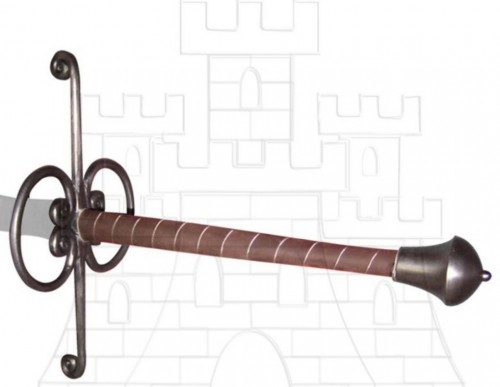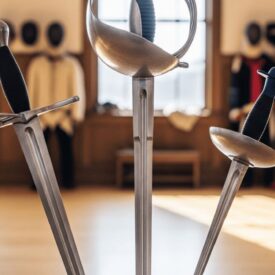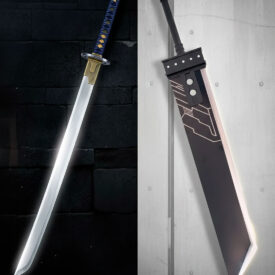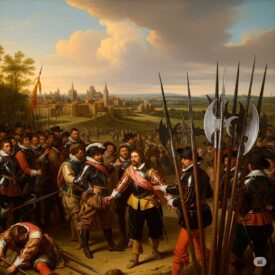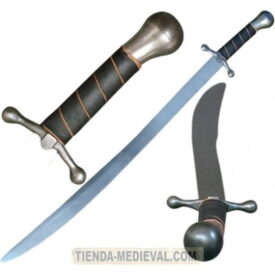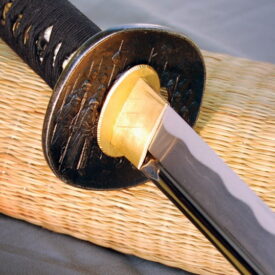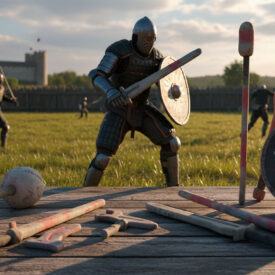What image comes to mind when you think of a sword almost two meters long that moves with the precision of a dancer? The montante sword was exactly that boundary between brute force and refined technique: a two-handed weapon native to the Iberian tradition that dominated battlefields, streets, and fencing schools from the Late Middle Ages to the Renaissance. In this article, you will learn its history, its technical characteristics, how it was handled in combat, and why its legacy still inspires practitioners and collectors.
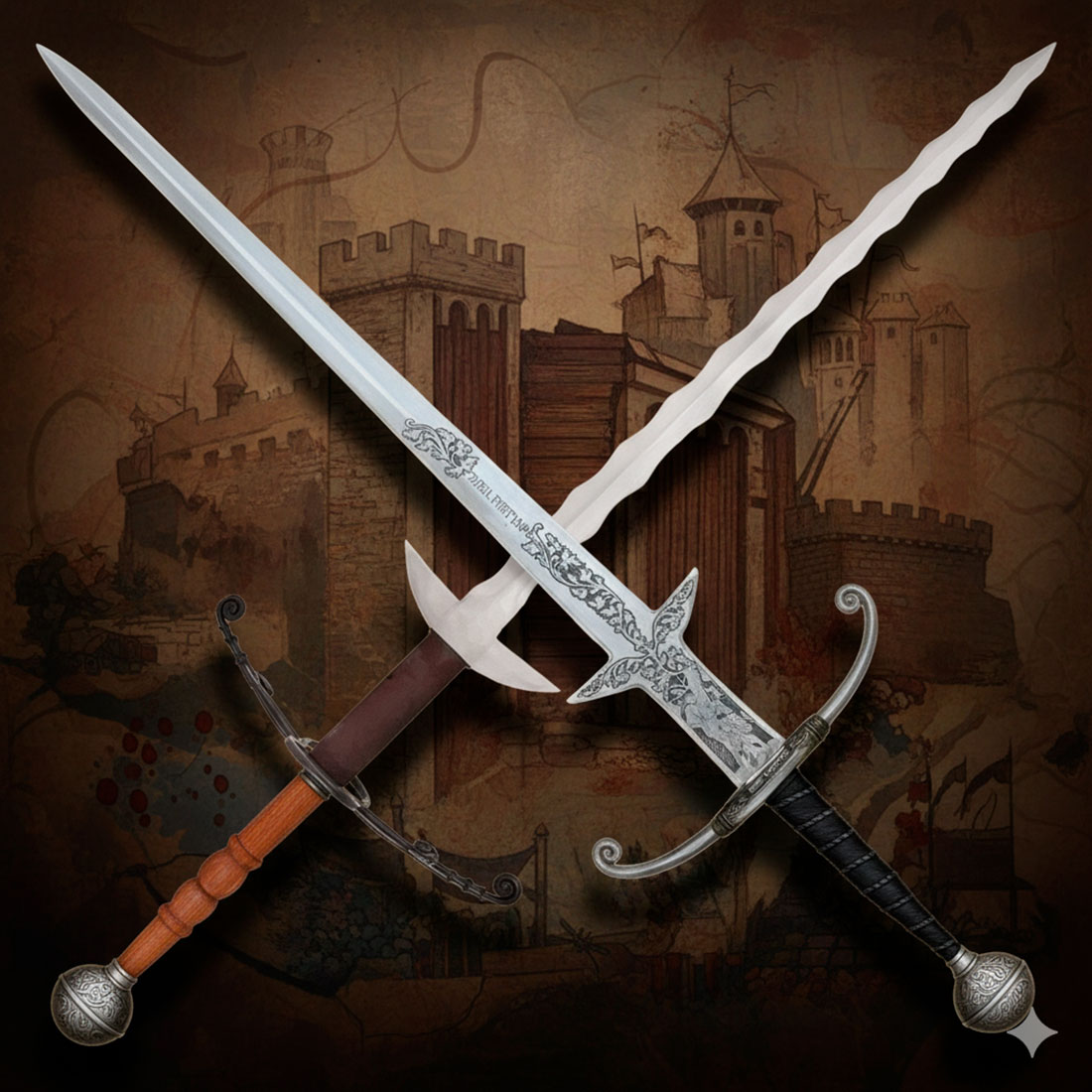
Chronology: milestones marking the evolution of the montante
| Era | Event |
|---|---|
| Late Middle Ages (11th – 15th Centuries) | |
| 11th Century (or earlier) | Medieval cavalry adopts the montante as part of its arsenal. |
| 14th Century | The term “montante” appears registered in written texts. |
| 1350–1550 | The montante is identified as a type of European sword used between the Late Middle Ages and the Renaissance. |
| From the 14th Century | It is possible to document the presence of royal fencing masters in the Iberian Peninsula. |
| Early 15th Century | Records of fencing master examinations highlighting the two-handed sword. |
| 1414 | A master dedicated to two-handed sword fencing is present at the court of the King of Navarre. |
| 1474 | Pedro de la Torre and Jaime Pons addressed the two-handed sword in works that were subsequently lost. |
| Late 15th Century (onwards) | The montante consolidates as an Iberian variant of the longsword that becomes fashionable from the late 15th century. |
| Early Modern Age (16th Century) | |
| 16th Century (general) | The term montante is specifically used for this sword; its use is widespread during the century. |
| 1509 | Pietro Monte, in his Collectanea, states that the short weapon game derives from the two-handed sword. |
| 1532 | Francisco Román, master of arms to Charles I, publishes a treatise that considers the montante as a fundamental weapon of fencing. |
| 1537 | The Barcelona silversmith Antonio de Valdes creates a masterpiece of hilt (not a montante), linked to the world of swords. |
| Mid-16th Century (1556) | Documentation of IOANES DE AGIRE, a Basque swordsmith who marked montante blades in Zaragoza. |
| 1560 | Fencing demonstrations with montantes in the festivities of the queen’s entry into Toledo. |
| 1563 | Seven simple rules for handling the montante annotated in the margin of a theological treatise (De Locis Theologicis). |
| Period 1550–1600 | Identification of a Germanic montante (bidenhänder) with a flammard blade, typical of the German Landsknechts in Hispanic service. |
| Late 16th Century (around 1582) | Publication of Jerónimo de Carranza’s Filosofía de las Armas (1582), founder of the school of True Destreza. From then on, the montante tends to be subordinated to the single sword in formal fencing systems, although Ancient Fencing endures. |
| 16th Century (military use) | Landsknechts and other units use montantes to break formations and create disorder in combat. |
| Late 16th Century | The military use of the montante decreases and it mainly performs functions of civil protection and crowd control. |
| 17th Century | |
| Early 17th Century | The proliferation of firearms leads the montante towards representative tasks: military police, guards, ceremony, and escort of flags and banners. |
| 1651 (May 10) | Diogo Gomes de Figueyredo writes the Memorial de la Práctica del Montante, the most complete known manuscript on the Iberian use of the two-handed sword. |
| Mid-17th Century | Documentation of swords with cup-type hilts manufactured in Zaragoza; known example: Miguel Anglada’s sword, dated 1658. |
| 17th Century (lexicon) | The term espadón begins to appear, used both for large swords and in a hyperbolic sense or to refer to men of high hierarchy. |
| 18th and 19th Centuries | |
| Until the 19th Century | The term “montante” continues to be present in literature and in the jargon of arms experts. |
| 19th Century | Widespread use of the term montante; the terms mandoble and espadón also become generalized to refer to large swords. |
| Until mid-19th Century | The school of True Destreza, which considers the montante a secondary weapon, endures in the formative tradition. |
| Modern use and contemporary study | |
| 1956 | The term mandoble is included in the dictionary as a colloquial form for a large sword. |
| Present | The montante is an object of study by enthusiasts and practitioners of ancient fencing, included in Western martial arts. |
| 2023 | Pablo Moya publishes a monograph on the two-handed sword and the montante, focusing on the Iberian panorama of the early Modern Age. |
What is the montante sword: definition and context
The montante sword is a large two-handed sword characteristic of the Iberian Peninsula, used from the Late Middle Ages to the Renaissance. Although compared to the German zweihänder, the montante developed its own technical and aesthetic language: lengths that could be around 1.60–1.85 m, a wide hilt for two-handed grip, and a double-edged blade primarily designed for cutting.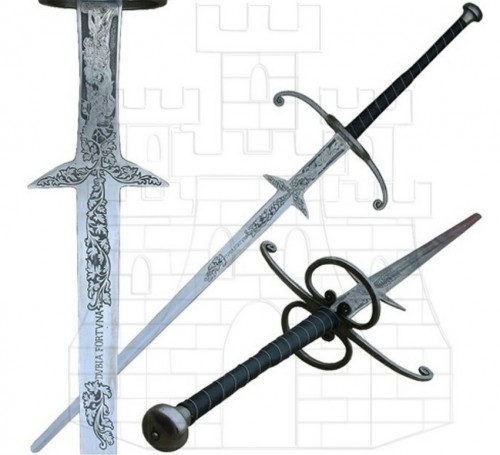
Technical characteristics: how it combines size and maneuverability
-
Length: 1.50–2.00 m (most common 1.60–1.85 m).
-
Weight: surprisingly light for its size; usually 1–2.5 kg, which allowed for agile fencing.
-
Blade: double-edged, mostly straight; some Germanic examples associated with Landsknechts feature flammard blades.
-
Hilt and pommel: long hilt (one third or more of the blade length) and heavy pommel acting as a counterweight for optimal balance.
-
Quillons: initially straight, they evolved into curved shapes to improve protection and control.
Tactical use: on the battlefield and beyond
The montante was not just an exhibition object: its military function was practical and varied. In formations, it served to break pikes and disorganize ranks, facilitating cavalry charges or troop advances. Outside the battlefield, its size made it a crowd control weapon and a symbol of authority among masters of arms.
Highlight functions
-
Breaking formations: blows aimed at maximizing disorder among pikemen and blocking defenses.
-
Personal defense in reduced spaces: wide cuts and circular movements to deny the area to the enemy.
-
Ceremonial and public order use: from escorts to the authority of the master at arms.
The montante technique: philosophy and movements
Montante fencing is a practice focused on controlling space through wide cuts, body rotations, and constant rhythm. It did not seek precise thrusts as much as denying the area around the combatant. The Iberian school prioritized agility, avoiding prolonged bindings with the rival blade so as not to be exposed to multiple attacks.
Operational principles
-
Circular strikes: slice and backhand to sweep the front.
-
Continuous movement: turn the body to accompany the inertia of the weapon.
-
Economy of combat: chain simple rules as proposed by the traditional “seven rules” and subsequent treatises.
Montante vs Zweihänder: practical comparison
| Characteristic | Montante (Iberian) | Zweihänder (Germanic) |
|---|---|---|
| Typical length | 1.50–2.00 m | 1.50–2.13 m |
| Typical weight | 1–2.5 kg | 2–4 kg (up to 6.6 kg in extreme cases) |
| Fencing style | Italian/Iberian school: agile cuts and turns | Germanic school: powerful blows and gap opening |
| Main use | Battle, crowd control, instruction | Battle (Landsknechts), formation breaking |
Terminology: montante, mandoble, and espadón
In modern vocabulary, there is overlap: montante is the historically documented term in the peninsula, espadón was a broader and later popularized term, and mandoble originally alluded to the type of blow (a powerful backhand) and only later came to name the weapon in colloquial language.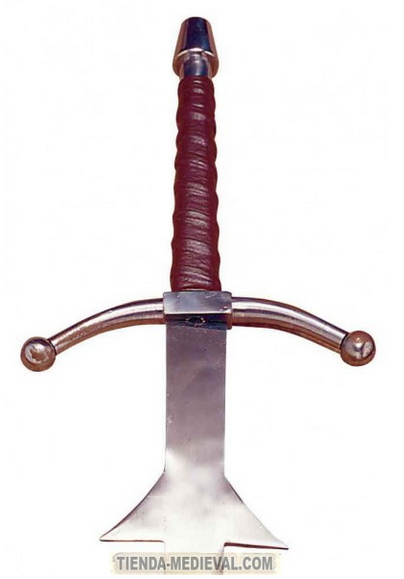
Cultural and symbolic texture
Beyond its physical performance, the montante symbolized the master’s skill and the combatant’s strength. It was an emblem in celebrations, processions, and in war iconography. In schools, the weapon was both an instructional tool and a professional distinction.
Key examples and manuscripts
Among the texts documenting its use are Diogo Gomes de Figueyredo’s Memorial da Prattica do Montante (1651) and the marginal notes where the so-called “seven rules” for starting with the weapon appear. These writings show a practical, chained system suitable for asymmetrical combat.
Resolve your doubts about the montante and its role in fencing history
What was the primary use of the montante in fencing?
Its primary use was to fight multiple enemies in asymmetrical threat situations, keeping them at bay with wide, powerful blows that denied the area around the user, rather than seeking precise impacts on specific body parts or individual duelists. This allowed it to leverage its great reach and strength to control space and prevent close contact with several adversaries simultaneously.
How did the montante differ from the zweihänder in terms of fencing?
The montante and the zweihänder are two longswords used in different regions during the Renaissance, but they differed primarily in their fencing.
- Fencing Style:
- Montante: Its fencing was based on techniques more similar to those of the Italian school, emphasizing precise and controlled movements. Agility and speed were key, as the montante was relatively light compared to its size.
- Zweihänder: It was used in combat formations to open breaches between pikemen’s spears. Its fencing focused on powerful blows and wide cuts, leveraging its size and weight to knock down adversaries.
- Stances and Movements:
- Montante: Involved more agile and short movements, with a focus on parries and rapid counterattacks.
- Zweihänder: Used broad and powerful movements, leveraging its length and weight to create breaches in formations.
In summary, while both were longswords used two-handed, the montante stood out for its agility and more refined techniques, while the zweihänder was known for its power and ability to generate breaches in combat.
What specific characteristics made it so agile despite its size?
The specific characteristics that made the Chevrolet Agile so agile despite its size include its 1.4-liter 4-cylinder engine, redesigned for optimal performance with good power and efficiency, along with a 5-speed manual transmission that facilitates smooth and controlled handling. Additionally, its hatchback design with aerodynamic lines and smooth contours contributes to efficiency and maneuverability, making it practical for urban driving and varied road conditions. It also features a soft suspension and tires with an appropriate profile that help adapt to urban obstacles without losing comfort or stability.
What role did the montante play in medieval battles?
The montante played a fundamental role as a heavy cavalry weapon in medieval battles, being used to take advantage of the force, speed, and impetus of mounted knights’ charges, whose main function was direct impact to break enemy ranks.
More precisely, the montante —a type of long spear— was the main weapon in the couched lance charge, a specific technique of the medieval knight that consisted of charging with the weapon parallel to the horse to maximize impact and open breaches in the enemy formation. This allowed heavy cavalry to execute a decisive, though not always definitive, shock effect on the battlefield. Cavalry, though not always predominant, was the backbone of most feudal armies, and its action with the montante in the charge represented the key moment of pitched battle.
However, in a broader context, medieval battles were not limited to cavalry and its montante, as infantry and other weapons (such as bows, crossbows, and blunt weapons) also played decisive roles, and in some cases, such as in the battles of Hastings, Crecy, or Agincourt, infantry managed to resist or defeat heavy cavalry. Medieval warfare was complex, and the montante charge was a specialized tactic within a broader repertoire.
Heavy cavalry was the backbone of most feudal armies, and its action with the montante in the charge represented the key moment of combat.
How did the design of the montante evolve throughout the Renaissance?
The design of the montante during the Renaissance evolved by integrating with classical geometric logic and the use of architectural orders derived from antiquity. Renaissance architects sought symmetry, proportion, and harmony, using columns and semicircular arches that harmonized with the structural and decorative plans of the building. In particular, the montante was designed with a focus on clarity of form and its function as part of a static and orderly composition, combining classical elements such as columns and entablatures with innovative techniques to resolve supports and loads, as in Brunelleschi’s dome of Santa Maria del Fiore.
This evolution represented a change from the more slender and pointed Gothic supports, as in the Renaissance the montante reintroduced the use of classical columns and pilasters, more robust and proportionate, which also adhered to mathematical canons of measurement. These elements became clear visual units, integrated into a geometrically rational and harmonious structure, where each part was recognizable and autonomous, following a logic of absolute and permanent order.
| Type | Blade length (approx.) | Era | Tactical use |
|---|---|---|---|
| Hispaniensis | 60–68 cm | 3rd–1st centuries BC | Versatile: powerful cuts and thrusts in closed formations. |
- Hispaniensis
-
- Blade length: 60–68 cm (approx.)
- Era: 3rd–1st centuries BC
- Tactical use: Versatile: powerful cuts and thrusts in closed formations.
Legacy and why it matters today
The montante came to symbolize a combination of physical strength and technical mastery. Today it inspires the practice of historical fencing and the manufacture of functional and decorative replicas that recall ancient techniques, proportions, and aesthetics. For the modern enthusiast, understanding the montante means understanding an essential part of the evolution of Western martial arts.
If you are interested in seeing replicas or models inspired by this tradition, explore collections focused on two-handed swords and historical models; remember that many current replicas respect historical proportions but adapt details for safe use in recreation.
VIEW CLAYMORE SWORDS | VIEW LOWLANDER SWORDS | VIEW WILLIAM WALLACE SWORDS
Today, the montante sword remains a testament to an era when the skill to wield great tools of war translated into social prestige and military effectiveness. Its preserved rules and treatises allow modern practitioners to reconstruct techniques and revive the dynamics of a weapon that was, at once, brutal and refined.
